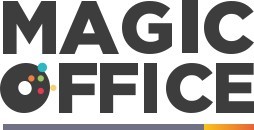
Understanding the Local Insurance Landscape
An Overview of the Local Insurance Sector
Understanding the local insurance landscape is crucial for improving the onboarding experience for customers. Within the Arabian Emirates, the insurance industry has been evolving rapidly, driven by digital transformation and shifting client expectations. Insurance companies and agencies are focusing efforts on streamlining the onboarding process to enhance customer satisfaction and retention.
The markets here are multifaceted, featuring a wide range of insurance products catered to diverse client needs. From life and health insurance to property and casualty policies, the complexity is reflected in the varied onboarding procedures. Companies are engaging both traditional methods and digital onboarding strategies to meet client demands effectively.
Insurance agencies face unique challenges in this region, which necessitates a nuanced understanding of client preferences and regulatory requirements. These challenges influence the ways insurance agents and agencies define their onboarding procedures. To tackle inefficiencies in the process and improve the overall customer experience, there's a growing emphasis on utilizing data and automation technologies.
To truly appreciate the landscape and enhance the onboarding journey, insurance companies must implement best practices in their processes. By analyzing key industry trends and leveraging technology, they can address existing challenges and improve the experience for their customers. For more detailed insights into the customer onboarding process, explore the efforts of Arabian Emirate company in revamping their call center experience here.
Key Challenges in Customer Onboarding
Barriers to Seamless Client Onboarding
Navigating the insurance industry in the Arabian Emirates presents several hurdles during the client onboarding phase. These challenges can obstruct the process, ultimately affecting customer experience and satisfaction detrimentally.
The complexity of the onboarding process is often exacerbated by regulatory requirements that can vary significantly across regions. The burden of understanding and complying with these regulations falls heavily on insurance agencies and often results in a time-consuming validation process. As companies strive to meet industry standards and ensure that every detail is meticulously checked, the client’s patience can wear thin, impacting overall engagement.
Another pressing challenge is managing the substantial amount of data collected during onboarding. Insurance companies must gather extensive personal information from clients to tailor the policy to their needs effectively. However, without a streamlined process or automation, managing this data can become cumbersome and prone to errors. The efficiency of the digital transformation within the agency directly influences how swiftly and accurately data is processed, thereby shaping the overall experience.
Moreover, the insurance sector is characterized by its diversity of products and services, often leading to information overload for the customer. Without clear communication and properly curated information, clients may feel overwhelmed, which might negate potential customer retention efforts. Insurance agents play a crucial role in guiding clients through this labyrinth, but even they can struggle without the right resources and training.
The transition to digital onboarding platforms has introduced new challenges as well. While these platforms promise a quicker and more efficient onboarding experience, they often need substantial initial investments and continuous updates. Additionally, clients accustomed to traditional methods may find the digital shift challenging, preferring personal interaction with agents over automated interfaces.
Addressing these challenges effectively could lead to enhanced satisfaction and long-term client relationships. To explore more on how clients move through their journey, you might find understanding their timelines enlightening.
Strategies for Effective Onboarding
Optimizing the Onboarding Experience for Lasting Customer Satisfaction
Enhancing the insurance customer onboarding journey is a critical step in ensuring customer satisfaction and retention. Here are some effective strategies that can streamline the entire process and improve the client's experience:- Developing a Comprehensive Onboarding Plan
- Emphasizing Clear Communication
- Leveraging Digital Transformation
- Personalizing the Customer Journey
- Training Agents and Agencies
Leveraging Technology for Better Onboarding
Innovative Use of Technology in Insurance Onboarding
In the insurance industry, the role of technology cannot be overstated. Implementing digital solutions in the onboarding process enhances the customer experience significantly. By integrating automation and digital practices, insurance companies can streamline their client onboarding, reducing the time and effort both clients and agents invest. The use of digital onboarding methods allows insurance agencies to efficiently collect data and ensure accuracy. This approach not only expedites the onboarding experience but also minimizes the risk of errors often associated with manual data entry. Digital onboarding tools provide a seamless transition for new clients, increasing customer satisfaction and retention. Many companies are incorporating automation into their processes to manage the large volume of policy documentation involved in insurance onboarding. Automation tools can help generate standardized checklists, ensuring that all necessary information is captured accurately during the process insurance journey. Insurance agents are now supported by platforms that offer predictive insights, aiding their ability to anticipate client needs and personalize offerings. These platforms empower agents to deliver a differentiated customer experience, aligning with the broader digital transformation trends in the industry. Furthermore, the use of digital platforms enables companies to track customer onboarding metrics effortlessly. This tracking is invaluable for continuous improvement initiatives, allowing agencies to fine-tune their approach and ensure an optimal onboarding experience for every new insurance client.Cultural Sensitivity and Personalization
Emphasizing Cultural Sensitivity and Personalization in Onboarding
Navigating the diverse cultural landscape of the Arabian Emirates requires insurance companies to incorporate a personalized approach during the customer onboarding process. Insurance agencies must meticulously attend to cultural nuances to foster a positive customer experience. Here's how they can effectively integrate cultural sensitivity and personalization:- Understanding Cultural Nuances: Recognizing cultural traditions and values is paramount in the insurance industry. Personalizing communications and interactions in a manner that resonates with the local clientele can significantly elevate the client onboarding process.
- Leveraging Language Preferences: Offering onboarding materials in multiple languages can make clients feel more at ease and understood. This step is crucial in eliminating potential language barriers that might arise during the onboarding process.
- Customizing Customer Interactions: Each customer is unique, and insurance agencies should use customer data to tailor the interaction. Customization based on previous interactions can enhance the onboarding experience and improve customer satisfaction.
- Implementing Feedback Mechanisms: Regularly gathering feedback from clients on their onboarding experience allows insurance agents to make informed adjustments. This practice not only demonstrates a commitment to customer satisfaction but also supports continuous improvement in the onboarding process.
- Training for Cultural Competence: Agencies can benefit from training their insurance agents in cultural competence, ensuring that their interactions align with cultural expectations, thereby fostering trust and rapport with clients.
Measuring Success and Continuous Improvement
Tracking Metrics for Continued Enhancement
Measuring the success of your customer onboarding process is pivotal in ensuring that every interaction meets the high standards of the insurance industry. This effort is not a one-time task but a continuous improvement opportunity. Companies must establish comprehensive metrics and evaluation frameworks to gauge the efficiency and effectiveness of their onboarding experiences.
Firstly, consider tracking customer satisfaction levels. Positive feedback from clients highlights successful engagements, while criticisms can illuminate areas for development. Satisfaction surveys and feedback forms provide a wealth of data which can be used to refine the onboarding process.
Automation plays a crucial role in streamlining the onboarding journey. By analyzing the time spent on each stage of the onboarding insurance process, companies can identify bottlenecks that may frustrate clients. Implementing digital solutions can lead to swifter transitions and enhanced customer experiences.
Monitoring customer retention rates is another key metric. By discerning trends and patterns in client engagements, insurance agencies can tailor strategies that resonate with specific customer segments. This approach not only improves retention but fosters long-term relationships built on trust and reliability.
Insurance agents and agencies should also assess the adaptability of their digital onboarding tools. Regularly updated software and integrated systems ensure that data remains accurate, improving client onboarding outcomes. The seamless alignment of digital solutions within the process is often a testament to an agency’s commitment to innovation and best practices.
Ultimately, the ability to continuously refine your onboarding strategy, utilizing data-driven insights and customer feedback, sets a foundation for sustained growth within the insurance industry.













